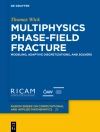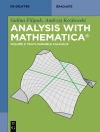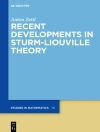This monograph, co-authored by three longtime collaborators, aims to promote the interdisciplinary field of mathematical biology by providing accessible new approaches to study natural systems. As there is currently scarce literature on the applications of mathematical modelling for biology research, this book presents a new way of studying interactions at the level of populations, societies, ecosystems, and biomes through open-sourced modeling platforms. It offers an interdisciplinary approach to analyzing natural phenomena—for example, by showing how master equations developed to describe electrical circuits can also describe biological systems mathematically. Ultimately it promotes a method of study based on modelling and mathematical principles, facilitating collaboration between mathematicians, biologists, engineers, and other researchers to enrich knowledge of the world’s ecosystems.
विषयसूची
Understanding Ecosystem Stability and Resilience through Mathematical Modeling.- The importance of life history and population interactions in population growth.- Habitat fragmentation.- Forest fires: fire management and the power law.- Material flow, task partition and self-organization in wasp societies.- Ants and Bees: common stomach regulation provide stability for societies.- Generalization of the common stomach: integral control at the supra-individual level.- Modeling techniques.












